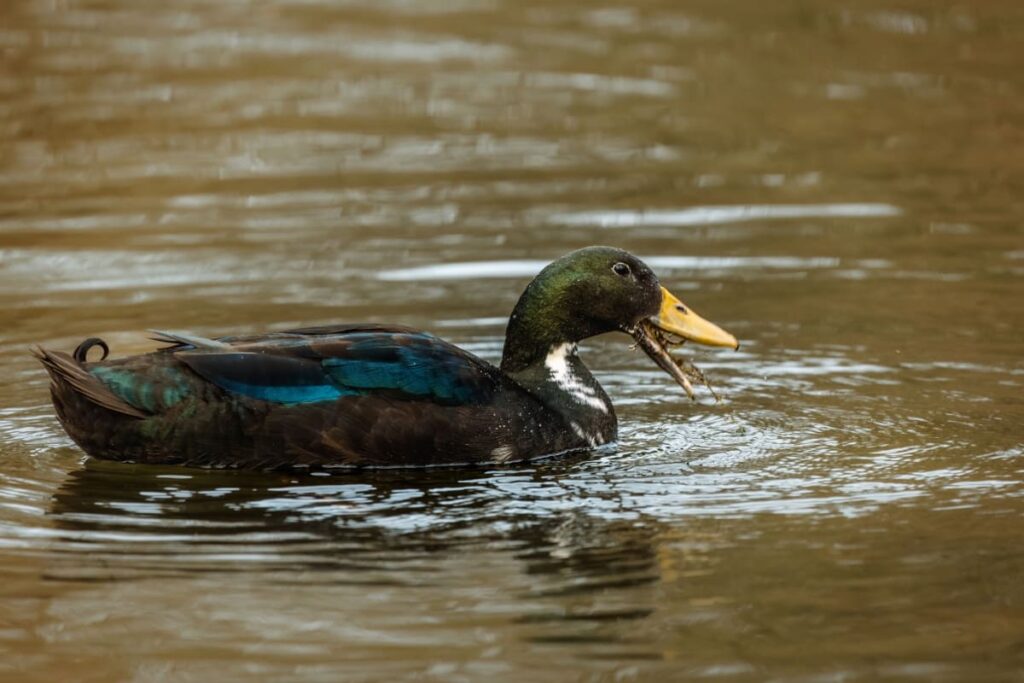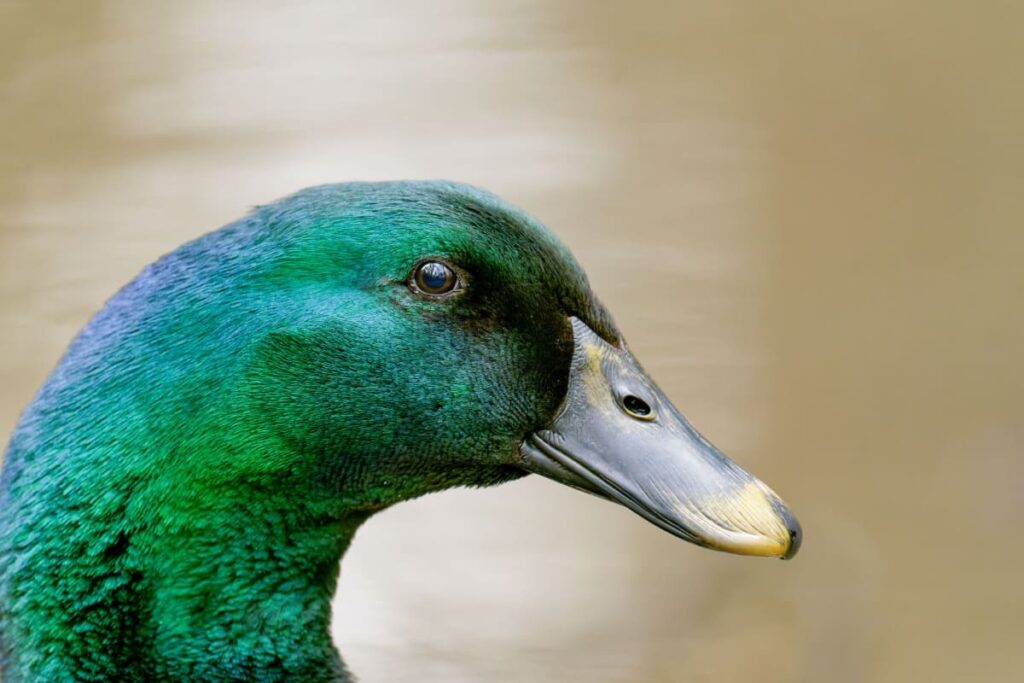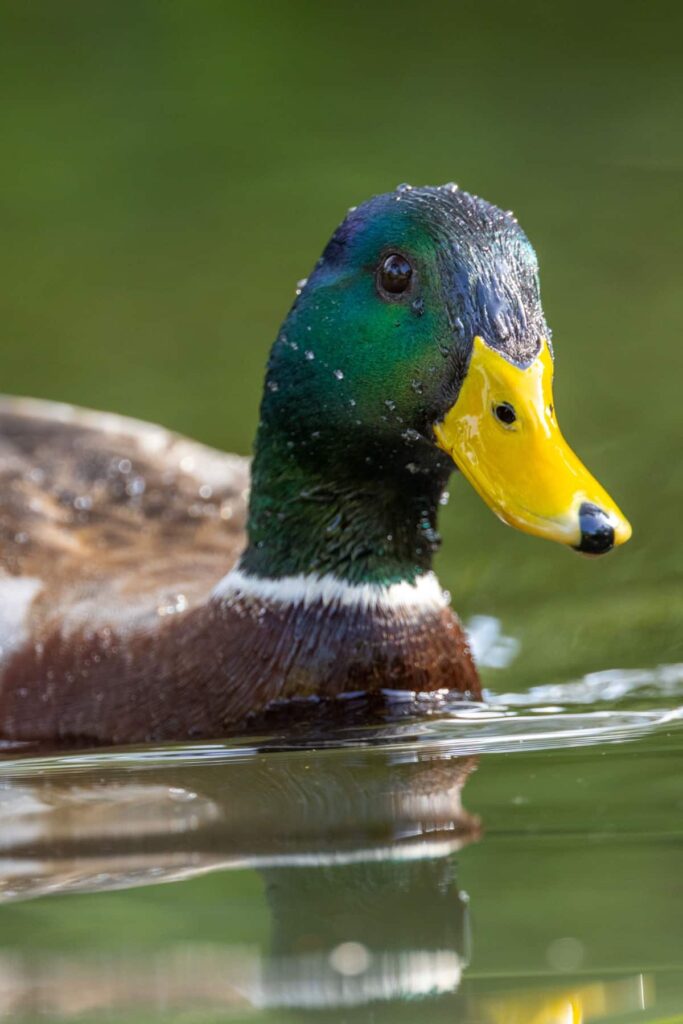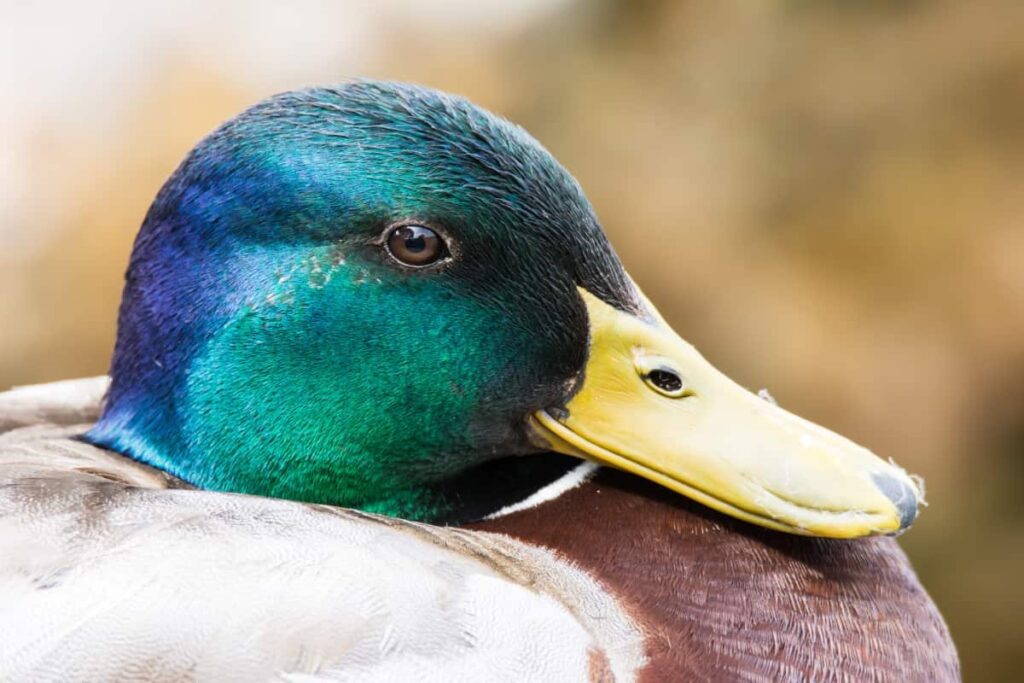Cayuga ducks are a beautiful and versatile breed that originated in the United States, specifically in the region around Cayuga Lake in New York. Known for their stunning iridescent green-black plumage, Cayugas are not only eye-catching but also valued for their usefulness in both egg and meat production. Here’s an overview of breeding, raising, and Cayuga duck care.

Cayuga Duck
Introduction to Cayuga Ducks
Origin and History of Cayuga Ducks: Cayuga Ducks originated in the United States, specifically in the Finger Lakes region of New York in the early 19th century. They were bred from wild black ducks, likely combined with Mallards and Rouens. The breed takes its name from Cayuga Lake, where it was first developed.
Physical Characteristics: Cayuga Ducks are renowned for their striking iridescent green-black plumage, which can appear almost blue in certain lights. They have medium-sized bodies with rounded chests and broad backs. Their bills are dark, as are their legs and feet.
Price: The price of Cayuga Ducks can vary based on factors like age, sex, and breeder reputation. Generally, adult birds are more expensive than ducklings, and quality breeding stock may command higher prices. On average, the adult ducks price ranging from $5 to $16.
Lifespan: With proper care, Cayuga Ducks can live for 8 to 12 years on average, although some individuals have been known to live longer.
Size: Cayuga Ducks are medium-sized waterfowl, with adult males (drakes) weighing around 3.2 to 3.7 kg and females (ducks) slightly lighter at 2.7 to 3.2 kg.
Cayuga Duck Egg Color: Cayuga duck eggs are typically a dark gray to black color with a slight greenish hue. They are known for their unique appearance and rich flavor, prized by chefs and egg enthusiasts.
Cayuga Duck Temperament and Behaviour
General Behavior: Cayuga ducks are known for their calm and docile demeanor, often exhibiting gentle and friendly behavior. They are curious by nature, exploring their surroundings with cautious curiosity. These ducks are typically social creatures, enjoying the company of other ducks as well as human interaction.
Interaction with Humans: Cayuga ducks can form strong bonds with humans if they are raised from a young age with consistent interaction. They are generally amiable towards people, showing affection through gentle nibbling and wagging their tails. With proper care and attention, Cayuga ducks can become cherished companions, delighting in human company and affectionate gestures.
Habitat and Living Conditions
Cayuga Duck Habitat: They thrive in freshwater habitats such as ponds, lakes, and marshes with ample vegetation for foraging. Their adaptability allows them to inhabit various wetland environments, making them versatile waterfowl.
Housing Needs: A minimum of 3-4 square feet per duck in the shelter is recommended, with ample room for nesting. Housing should protect from predators and the elements, with adequate ventilation to prevent respiratory issues. Bedding, like wood shavings or straw, should be provided for comfort and cleanliness. Provide nesting boxes filled with straw or hay for egg-laying. Access to a fenced outdoor area or a secure yard is essential to allow for grazing and exercise.
In case you missed it: Duck Farming Basics, Housing, Feeding for Eggs, Meat

Diet and Nutrition
Feeding Habits: Cayuga ducks thrive on a varied diet comprising grains, greens, and aquatic plants. For feeding Cayuga ducks, offer a balanced diet of commercial waterfowl feed supplemented with fresh vegetables like lettuce, spinach, and peas. Feed twice daily, ensuring they consume all within 15 minutes to avoid wastage. Adjust quantities based on activity level and environmental conditions, typically ¼ to ½ cup per bird per feeding.
Nutritional Requirements: A balanced diet for Cayuga ducks should contain around 16-18% protein, 2-3% calcium, and appropriate levels of vitamins and minerals. The ingredient composition typically includes grains like corn and wheat, protein sources like soybean meal, and added nutrients such as vitamins A, D, and E, along with calcium and phosphorus for bone health. Avoid feeding them with foods high in salt or sugar.
Health and Care
Cayuga Duck Health Issues: Cayuga ducks are generally hardy, but they can be susceptible to common poultry ailments such as respiratory infections, bumblefoot, and parasites like worms and mites. Watch for signs of lethargy, decreased appetite, or abnormal droppings, which may indicate illness.
Veterinary Care: Regular veterinary check-ups are essential for monitoring overall health and addressing any emerging issues promptly. Vaccinations, deworming, and preventive measures against parasites should be administered as recommended by a poultry veterinarian.
Daily Care and Maintenance: Provide clean water for swimming and drinking, as Cayugas are waterfowl. Maintain a balanced diet of commercial duck feed supplemented with greens and occasional treats like mealworms. Ensure access to shelter from predators and extreme weather conditions. Regularly clean their living quarters to prevent the buildup of waste and minimize the risk of disease.
Breeding and Reproduction
Breeding Process: Cayuga ducks, known for their iridescent green-black plumage, are bred through natural mating. For breeding Cayuga ducks, ensure a balanced ratio of drakes to ducks for successful breeding. Introduce them in a calm environment with access to water for mating behaviors. In flocks, the general recommendation is one drake for every 4-6 ducks.
Cayuga Duck Egg Production: Cayuga ducks are prolific layers, producing around 100-150 eggs annually. Provide nesting boxes filled with straw for comfortable egg-laying. Collect eggs promptly to prevent breakage and encourage continuous laying.
Raising Cayuga Ducklings: Incubate Cayuga duck eggs for 28 days at 37.5°C with high humidity. Once hatched, provide a warm brooding area with a heat source. Feed ducklings a starter ration with 18-20% protein, adjusting as they grow. Introduce them to water for swimming and supplement their diet with grit for digestion.
In case you missed it: Pomeranian Duck Profile: Origin, Characteristics, Size, Eggs, Lifespan, Uses, and Price

Uses and Products
Eggs and Meat
Cayuga ducks are prized for their dual-purpose capabilities. Their eggs are large, rich, and flavorful, making them excellent for culinary use and baking. With proper care, Cayugas can lay consistently throughout the year, providing a steady supply of eggs. Additionally, their meat is highly regarded for its succulence and depth of flavor. Cayuga duck meat is often compared to that of other duck breeds, with its distinctive taste appreciated by chefs and home cooks alike.
Ornamental and Show Birds
Renowned for their striking iridescent green-black plumage, Cayuga ducks are favored as ornamental birds and popular choices for exhibitions and shows. Their unique coloration makes them stand out in any flock, adding aesthetic appeal to ponds and water features. Cayugas are known for their calm demeanor and adaptability, making them excellent choices for showcasing at poultry events. Breeders often prize Cayugas for their beauty and seek to maintain and improve their distinctive appearance through selective breeding programs.
In case you missed it: Vorwerk Chicken Breed: History, Origin, Characteristics, Price and Egg Production

Conclusion
Cayuga ducks are popular for both their ornamental value and their practicality in terms of egg and meat production. By following the above-outlined guidelines, you can successfully breed, raise, and care for Cayuga ducks, whether for their eggs, meat or simply Cayuga ducks as ornamental birds to your farm or backyard.
Note: The images presented in this post are intended solely for representation purposes. The images are meant to serve as visual aids and should not be relied upon as accurate representations of their real-life counterparts.
- How to Raise Pigs in Your Own Backyard: A Comprehensive Guide
- Budget Friendly Sheep Shed Ideas: Cheap and Low-Cost Tips
- How Much Do Cattle Farmers Make: Revenue Streams in Cattle Farming
- Management Pests and Diseases in Your Cotton Field
- Sheep Farming Business Plan for Beginners
- Aquaponic Farming at Home: A Step-By-Step Guide
- Profitable Village Farming Business Ideas in 2024
- High-Yield Aquaculture: Fast-Growing Fish for Farming
- Effective Fish Pond Construction Techniques for Beginners
